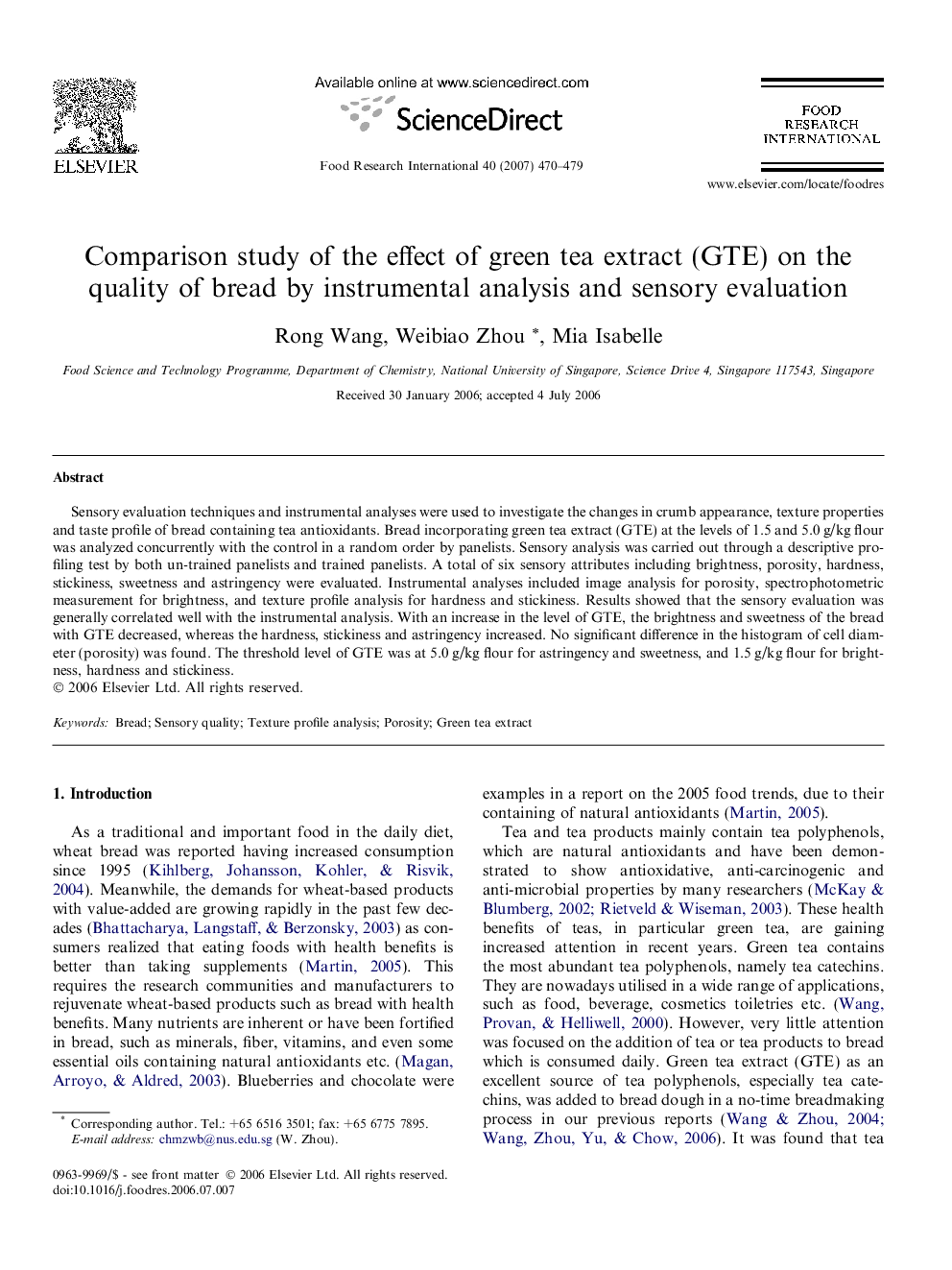| Article ID | Journal | Published Year | Pages | File Type |
|---|---|---|---|---|
| 4562927 | Food Research International | 2007 | 10 Pages |
Sensory evaluation techniques and instrumental analyses were used to investigate the changes in crumb appearance, texture properties and taste profile of bread containing tea antioxidants. Bread incorporating green tea extract (GTE) at the levels of 1.5 and 5.0 g/kg flour was analyzed concurrently with the control in a random order by panelists. Sensory analysis was carried out through a descriptive profiling test by both un-trained panelists and trained panelists. A total of six sensory attributes including brightness, porosity, hardness, stickiness, sweetness and astringency were evaluated. Instrumental analyses included image analysis for porosity, spectrophotometric measurement for brightness, and texture profile analysis for hardness and stickiness. Results showed that the sensory evaluation was generally correlated well with the instrumental analysis. With an increase in the level of GTE, the brightness and sweetness of the bread with GTE decreased, whereas the hardness, stickiness and astringency increased. No significant difference in the histogram of cell diameter (porosity) was found. The threshold level of GTE was at 5.0 g/kg flour for astringency and sweetness, and 1.5 g/kg flour for brightness, hardness and stickiness.
